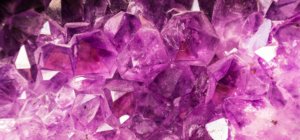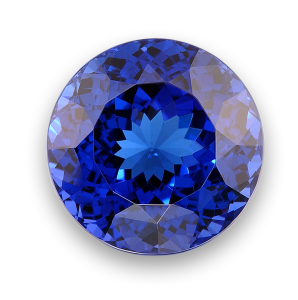 If you have shopped for a diamond or gemstone recently, you have no doubt been apprised of the “4 C’s”: carat weight, clarity, color, and cut. The 4 C’s play an important role in the description and valuation of diamonds and gemstones. Here, you will learn key information about two of the four C’s: carat weight and clarity.
If you have shopped for a diamond or gemstone recently, you have no doubt been apprised of the “4 C’s”: carat weight, clarity, color, and cut. The 4 C’s play an important role in the description and valuation of diamonds and gemstones. Here, you will learn key information about two of the four C’s: carat weight and clarity.
Of the 4 C’s, carat weight is the most scientific, based purely on data without a subjective comparison or analysis. A carat is a unit of measure and refers to the size of a diamond or gemstone with regards only toward its actual weight. The history of gemstone mining dates back several hundred years. It is believed that early gem traders from the Middle East used the carob bean as a comparative weight measure. The carob bean was deemed suitable because carob beans are extremely uniform in weight allowing for a reliable reference on the counter balance of a scale when weighing gemstones.
What Does a Carat Look Like?
Today, carat weight has a very specific definition; one carat is equal to 200 milligrams, or one-fifth of a gram. To give you an idea of just how minuscule a carat is, consider that a typical paper clip weighs around 1.5 g rams and a modern penny, around 2.5 grams. That means a penny would weigh 12.5 carats and that paper clip would weigh 7.5 carats! For a precious gemstone, that would be considered very large and very rare. Consider that a round brilliant cut one carat diamond would be about the same diameter as a pencil eraser. A one carat blue sapphire would be even smaller than that! And that is because different types of gems, even if they have the same carat weight, will not be identical in size. This is due to specific gravity.
rams and a modern penny, around 2.5 grams. That means a penny would weigh 12.5 carats and that paper clip would weigh 7.5 carats! For a precious gemstone, that would be considered very large and very rare. Consider that a round brilliant cut one carat diamond would be about the same diameter as a pencil eraser. A one carat blue sapphire would be even smaller than that! And that is because different types of gems, even if they have the same carat weight, will not be identical in size. This is due to specific gravity.
Specific Gravity: What You Need to Know
Each different type of mineral will have its own particular specific gravity. Specific gravity is determined by a comparative ratio of the density substance to a reference substance, which is usually water. Different types of gemstones, even if they are the same size, will have different carat weights. It is important to have knowledge of specific gravity because it plays a major role in gem identification. Diamonds have a specific gravity of 3.52. A sapphire will have an average specific gravity of 4, meaning the sapphire material, (corundum) is denser and will weigh more that the material comprising the diamond (crystallized carbon) even if the gemstones are similar in size. Varieties of quartz (amethyst, citrine, and prasiolite, among others) will have an approximate specific gravity of 2.65, so an amethyst would have a much smaller carat weight than a sapphire of the same size.
Carat Weight and Gemstone Pricing
Carat weight has an important impact of the price of a gemstone. The higher the carat weight, the more expensive the gem will be. Gemstones are frequently priced per carat meaning that gemstones of a known quality are sold by their actual weight. A 1.5-carat sapphire priced at $800.00 per carat would cost the buyer $1,200. Smaller gemstones are not as rare and will often have a much lower per carat price.
Clear Answers on Clarity
Gemstone clarity refers to how many or how few surface or internal characteristics a gemstone has. Internal characteristics are frequently referred to as inclusions. These are also known as “nature’s fingerprints” and reveal a fascinating microscopic world. The size, number, and nature of inclusions give each gemstone a distinct appearance and always impact a gemstone’s price. Gemstone inclusions are described on a scale from flawless to included. Here are some descriptions you will see when researching gemstone inclusions.
- F- The gemstone is flawless with no detectable internal or surface inclusions.
- IF- The gemstone is internally flawless and may have microscopic surface characteristics.
- VVS- The gemstone is very, very slightly included. Characteristics are not visible to the naked eye and are difficult to locate under magnification. VVS clarity grades have two distinctions: VVS-1 and VVS-2, with VVS-1 being the higher grade.
- VS- The gemstone is very slightly included. Characteristics are not visible to the naked eye and are somewhat difficult to locate under magnification. VS clarity grades also have two distinctions: VS-1 and VS-2, with VS-1 being the higher grade.
- SI- The gemstone is slightly included. Characteristics may or may not be visible to the naked eye, but easy to locate under magnification. SI clarity grades have two distinctions as well. SI-1 and SI-2. SI-2 gems often have inclusions that are visible to the naked eye. Be careful about vendors who represent gemstones as SI-3, because SI-3 is typically not a universally accepted clarity grade. The vendor may be trying to make the gemstone sound better than it actually appears.
- I- Included gemstones that have characteristics that are easy to locate with the naked eye. I-clarity gemstones can still be very beautiful and many gemstones are rarely transparent or flawless. Like the other clarity grades, an I grade has two distinctions, I-1 and I-2. Beware of gemstones advertised as I-3. I-3 is not a universally accepted clarity grade and these may be gems of poor quality.
With knowledge of carats and clarity, you are equipped with some very important gemstone information that will lead you to smart buying decisions. If you recently purchased a gemstone, did carat weight factor into your decision? What about clarity? Were you willing to sacrifice a clarity grade in order to get a larger carat weight? Tell us which criterion is more important to you and we will post the results.
Read more posts from the Gemstone Buying Guide series
